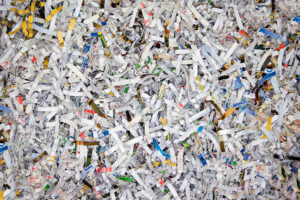As the medical industry continues to grow, so does the amount of medical waste generated. Medical waste can be hazardous and pose serious health and environmental risks if not managed properly. That is why it is important to stay informed about the latest trends and innovations in medical waste management. In this article, we will discuss the current state of medical waste management and the future trends and innovations to look out for.
Current State of Medical Waste Management
The management of medical waste is regulated by federal and state laws. The United States Environmental Protection Agency (EPA) sets the federal regulations for medical waste management, while individual states have their own laws that must be followed. Medical facilities are required to follow these regulations to avoid penalties and protect public health. State and local guidance may vary, so it is always recommended to understand and stay updated to the laws and regulations in your respective state and locale.
Despite these regulations, there have been instances of medical waste mismanagement in the past. For example, in 2016, a medical waste facility in Indiana was fined $11,000 for exposing workers to hazardous waste. In 2019, a hospital in Florida was fined $7,000 for improperly disposing of medical waste. These incidents underscore the importance of proper medical waste management and the need for continued innovation in this field.
Trends and Innovations in Medical Waste Management
Disinfection Technologies
Another trend in medical waste management is the use of disinfection technologies. These technologies can effectively sterilize medical waste and reduce the risk of infection. In 2019, OnSite Waste Technologies released its TE-5000 sterilization technology, a desktop-sized processing device that enables medical-waste generators to treat and dispose of their sharps and other bio-waste on-site with the push of a button. Ultraviolet (UV) light and ozone are two more examples of disinfection technologies that are becoming more common in medical waste management.
Waste Reduction Strategies
Waste reduction strategies are also gaining popularity in medical waste management. Healthcare facilities are exploring ways to reduce the amount of medical waste they generate through recycling, reusing, and reducing waste at the source. This not only helps reduce the environmental impact of medical waste but also saves money. In 2020, during the peak of COVID, OnSite Waste Technologies developed and released WasteTechIQ™, medical-waste management software, to help small-quantity generators reduce their waste output overall by delivering volume-data transparency, trend insights, and actionable guidance. Waste reduction initiatives are commonly accepted as the largest and most effective contributor to lessoning a facility’s medical-waste volume output and, in turn, the overall program spend.
Robotics and Automation
One of the major trends in medical waste management is the use of robotics and automation. Robotics can help reduce the amount of human contact with medical waste and minimize the risk of injury or infection. Automated systems can also help reduce costs by streamlining the sorting and processing of medical waste.
Smart Bins
Smart bins are another innovation in medical waste management. These bins use sensors and internet connectivity to monitor and optimize the collection and disposal of medical waste. They can track the amount of waste generated, alert staff when the bins are full, and even help optimize waste collection routes.
Innovations at OnSite Waste Technologies
At OnSite Waste Technologies, we understand the importance of proper medical waste management. Our innovative solutions help healthcare facilities safely and efficiently manage their medical waste. OnSite has worked closely with its thousands of healthcare clients to build cutting-edge technologies including: the TE-5000 desktop sterilization device, WasteTechIQ™ medical-waste management software, and more.
Proper medical waste management is essential for the safety of staff and patients, as well as the economic success of healthcare facilities. OnSite Waste Technologies is committed to providing innovative solutions, empowering healthcare with the tools to help build an optimized and progressive medical-waste management program. Contact us today to learn how we can help your healthcare facility save money, improve efficiency, and ensure compliance with regulations.
Sources:
United States Environmental Protection Agency. (2022, January 6). Medical Waste. https://www.epa.gov/medicalwaste.
United States Department of Labor. (2016, December 22). Indiana medical waste processing company cited for exposing workers to hazardous waste. https://www.osha.gov/news/newsreleases/region5/12222016.
Florida Department of Environmental Protection. (2019, June 5). Department fines Lee Memorial Hospital for improper handling of hazardous waste. https://floridadep.gov/waste/waste-cleanup/content/department-fines-lee-memorial-hospital-improper-handling-hazardous-waste.
State-by-State Regulated Medical Waste Resource Locator. https://www.hercenter.org/rmw/rmwlocator.php










